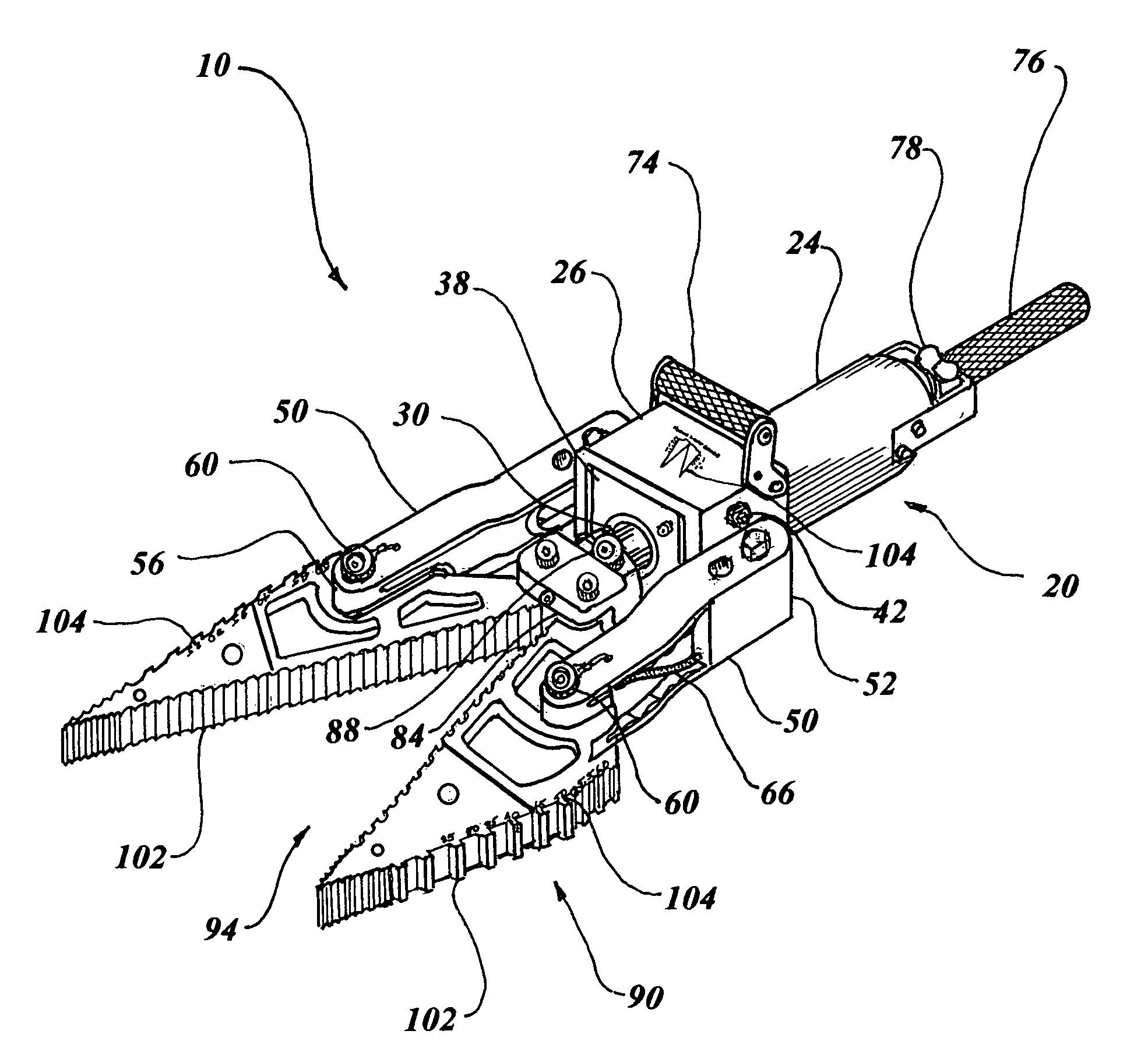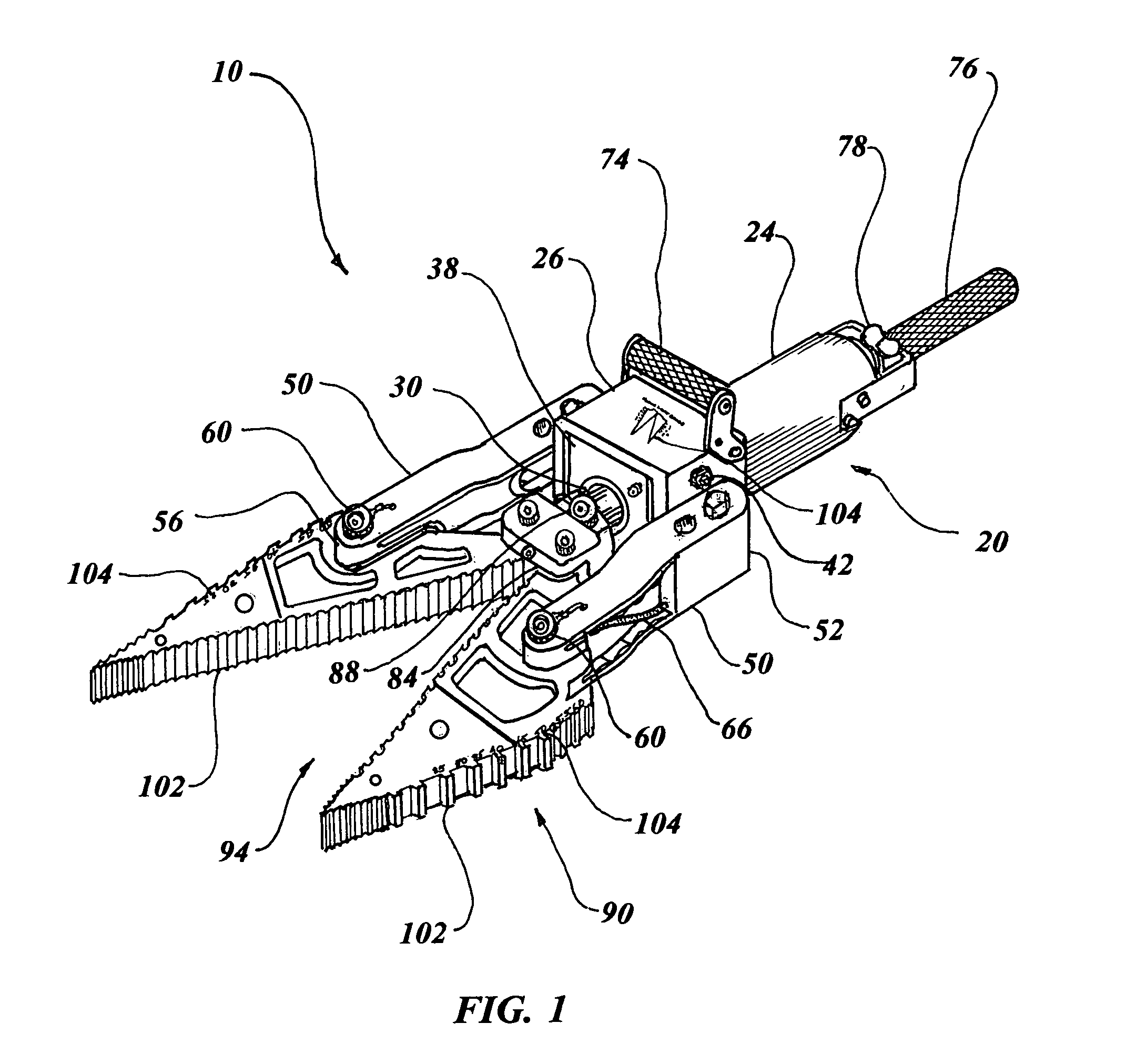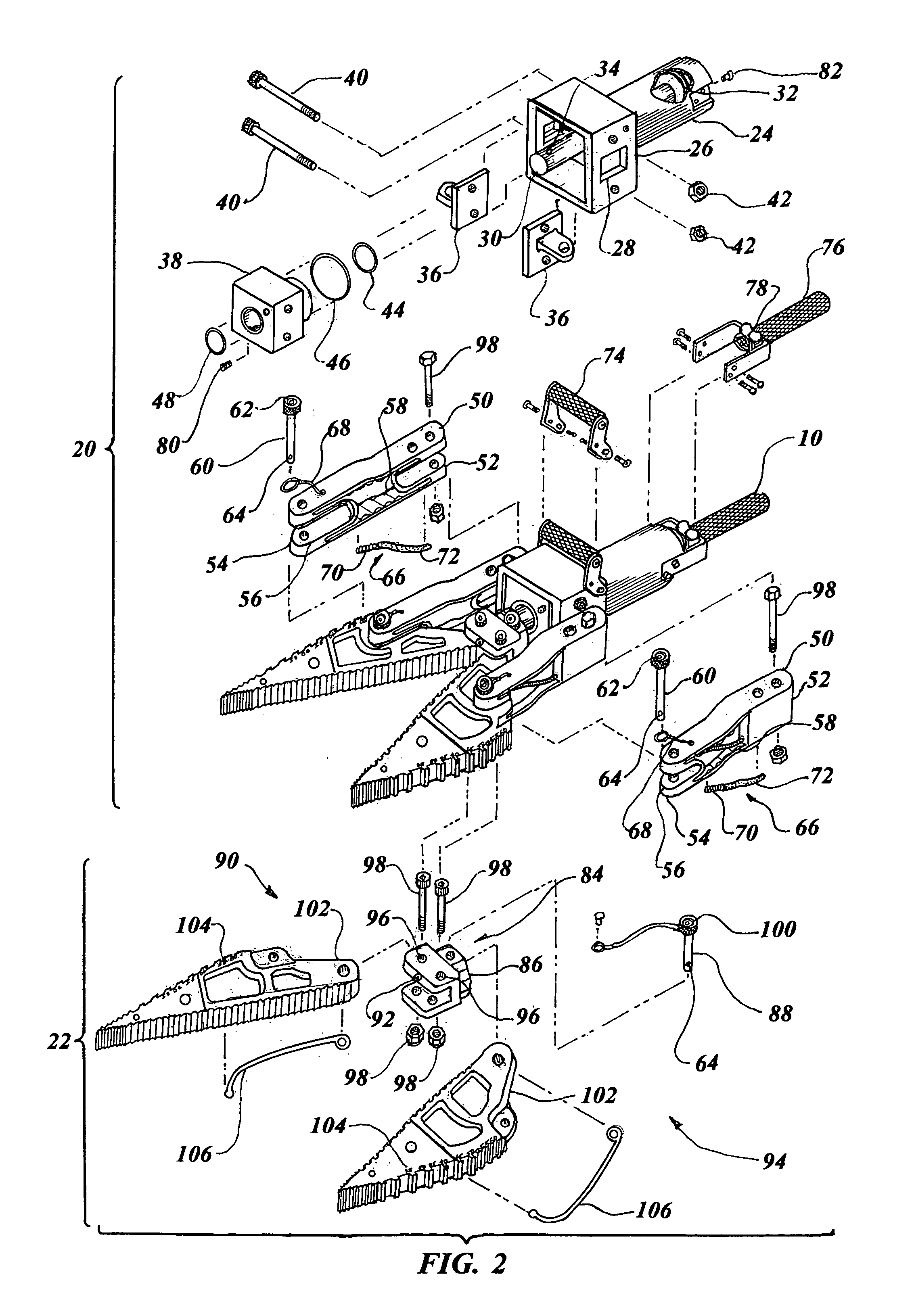Hydraulic rescue tool
a technology of hydraulic rescue and tool, applied in the direction of forging presses, forging/pressing/hammering apparatuses, drawing dies, etc., can solve the problems of insufficient power to achieve, excessive weight of emergency personnel to efficiently handle tools, leakage or even catastrophic failure, etc., to prevent overpressurization and storage. easy
- Summary
- Abstract
- Description
- Claims
- Application Information
AI Technical Summary
Benefits of technology
Problems solved by technology
Method used
Image
Examples
embodiment 94
[0062]The vehicle structure separating apparatus 90 in the spreader arm embodiment 94 consists of a pair of opposed spreader arms 102 attached to the yoke 84 and also each connecting link 50. Each spreader arm 102 consists of a steel spreader member having full length teeth and annealed tips that are pinned and bonded to a spreader arm aluminum body.
[0063]The spreader arms 102 contain force load gauge indicia 104 on an exposed surface to indicate the amount of force available at a given point relative to a pivot point distance. Each arm 102 incorporates an internal energy absorbing member 106 disposed in a groove flush with an underside external surface. Alternately, the force load gauge indicia 104 may be etched, silk screened, stenciled or attached with a decal, name plate, or the like, to any part of the hydraulic rescue tool 10 displaying the same information, as illustrated in FIG. 1. The energy absorbing member 106 is preferably constructed of flat malleable mild steel welded ...
embodiment 108
[0065]The tethered yoke pin 88 in this cutter jaws embodiment 108 includes a self-contained third LED 100 within a head portion of the pin 88 and an adjustable ball lock detent 64 on the opposite end.
[0066]The vehicle structure separating apparatus 90 specifically consists of a pair of cutting blades 126 with each cutting blade 126 having a top member 128 and a bottom member 130. The two members 128, 130 are attached together to form a double thick blade with the top member 128 smaller than the bottom member 130 and the bottom member 130 having an annealed tip. Each member incorporates an internal energy absorbing member 106 disposed flush on an underside surface. The internal energy absorbing member 106 is constructed of flat malleable mild steel, welded in place on an interface surface to the one of the members 128 and 130. The double thick cutting blades 126 engage together in mirror image sets such that the bottom members 130 engage contiguously.
[0067]Force load gauge indicia 10...
sixth embodiment
[0082]The quick disconnect implement unit 22 in the sixth embodiment, as illustrated in FIGS. 11 and 12, is designated as the reverse cutting guillotine head 186. In this embodiment the yoke 84 is connected to the piston rod 30 and a hooked blade 188 is attached to the yoke 84. A slotted barrier block 190 is configured to permit the hooked blade 188 to pass through when the hook end of the blade 188 surrounds a workpiece and is pulled into the slotted barrier block 190, a severing action occurs such as that created by a guillotine.
[0083]The yoke 84 is configured with unitary steel construction with a flattened hub attached to the piston rod 30. The tethered yoke pin 88 has a self-contained third LED light 100 within a head portion of the pin 88 and an adjustable ball lock detent 64 on the distal end.
[0084]The yoke 84 in this embodiment is different than the previous embodiments in that it is specifically designated as a blade containing yoke 192 configured with an integral elongated...
PUM
| Property | Measurement | Unit |
|---|---|---|
| thick | aaaaa | aaaaa |
| Rockwell hardness | aaaaa | aaaaa |
| hydraulic pressure | aaaaa | aaaaa |
Abstract
Description
Claims
Application Information
 Login to View More
Login to View More - R&D
- Intellectual Property
- Life Sciences
- Materials
- Tech Scout
- Unparalleled Data Quality
- Higher Quality Content
- 60% Fewer Hallucinations
Browse by: Latest US Patents, China's latest patents, Technical Efficacy Thesaurus, Application Domain, Technology Topic, Popular Technical Reports.
© 2025 PatSnap. All rights reserved.Legal|Privacy policy|Modern Slavery Act Transparency Statement|Sitemap|About US| Contact US: help@patsnap.com



